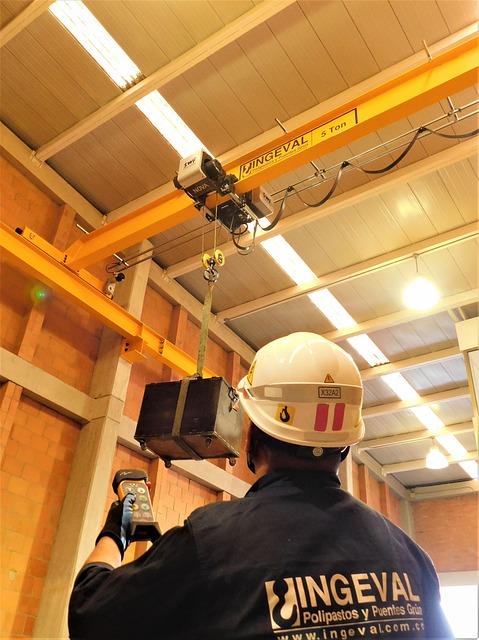Operating overhead cranes is a critical task that requires a comprehensive understanding of safety protocols to ensure accident-free and efficient operations. These powerful machines play a crucial role in various industries, lifting and transporting heavy loads. However, they also come with inherent risks that demand careful attention. This article presents must-know safety information for overhead crane operators. By emphasizing safety best practices, this guide aims to equip operators with the knowledge and awareness needed to protect themselves and others while maximizing the potential of overhead cranes.
Critical Information for Operating Overhead Cranes Safely
In-depth Training and Certification
Overhead crane operators must have complete training. Load charts inform operators of the crane’s load-bearing capacity and operating constraints. To guarantee smooth and accurate operation, crane control training should include button, switch, and lever functions.
The training should include emergency measures for equipment failure, power outages, and other unforeseen events. This information helps prevent injury and expedite emergency responses. Personnel should be taught correct rigging, inspection, and operating procedures to avoid mishaps.
Operators should be certified after training. This qualification proves they can operate cranes safely and efficiently. Businesses can ensure safety and efficiency by training and certifying operators.
Regular Equipment Inspections
Routine crane and lifting equipment inspections maintain dependability and lifespan. In a preventative maintenance program, qualified workers should examine for wear, damage, and malfunction.
This inspection should evaluate the crane’s beam, hoist, and hook for deformation, fractures, and corrosion. Also important is maintaining the braking system, limit switches, and control buttons. These components can malfunction, causing uncontrolled movement or inability to stop.
Overload protectors and emergency stop buttons should also be examined. Regular inspections keep workers safe, optimize crane performance, avoid expensive repairs, and prolong equipment life. These precautions help organizations avoid accidents and run smoothly.
Proper Load Handling
Maintaining the load capacity of overhead cranes is crucial to prevent potential disasters, such as crane failure, cable breakage, and catastrophic collapses. Despite the pressures to meet tight deadlines and high expectations, strict adherence to the manufacturer’s load capacity guidelines is paramount. These load capacities are carefully determined, taking into account the crane’s design, material strength, and various operating circumstances. For instance, if a 3-ton overhead crane is used beyond its specified limit, it could lead to structural damages, compromise the safety of workers, and result in costly repairs or replacements.
Before lifting, connect the weight to the crane’s hook using the right lifting attachments. Balanced loads reduce crane tension and tipping. Maintain weight distribution from lift-off through placement.
Operators should also be educated to spot overloading signals such as unexpected crane motions, load swaying, or crane sounds. Following these measures may minimize the risk of accidents, make the workplace safer, and increase the lifetime of crane equipment, encouraging a more efficient and safe operation with a 3-ton overhead crane.
Understanding Crane Limitations
To utilize a crane safely, operators must know its limits. Understanding the crane’s lifting capacity is of utmost importance, as overloading can lead to equipment failure or even crane collapse. Before lifting, operators must verify the load weight to ensure it’s within the crane’s restrictions.
Crane reach and capacity depends on boom length. When completely extended, boom length might affect crane stability. Knowing the crane’s operating range and maximum height and radius prevents overreaching or hitting nearby buildings.
Operators must also know how the crane reacts to certain controls. Understanding how the crane responds to varied control inputs, weight, and ambient variables can minimize mishandling and mishaps. Theoretical and practical training should let operators experience these reactions. Understanding a crane’s limits and control reactions helps ensure safe and efficient operation.
Compliance with Safety Regulations
Overhead crane operators must follow all safety rules. The Occupational Safety and Health Administration (OSHA) and other safety agencies establish these rules in the US. Safety regulations safeguard employees and equipment.
Safety rules can require PPE. Crane operators can wear safety helmets, high-visibility gear, and safety shoes to avoid dangers. Operators can also need safety harnesses or hearing protection.
Safety rules include involving rigging, load limit compliance, and crane movement. These requirements also require regular crane maintenance to ensure safety. Preventive maintenance, inspections, and repairs are included.
These safety requirements are both legal and essential to a safe workplace. It eliminates accidents, protects employees, and boosts productivity and efficiency.
Emergency Preparedness
Crane operators must know emergency protocols to react quickly and appropriately. Operators must know their crane’s emergency stop settings. These controls stop crane operation if a fault or danger is identified. Operators should learn to recognize emergency control scenarios.
Operators should also know how to evacuate their workplace. Operators should know how to escape quickly and safely in emergencies like fires or equipment failures.
In rural or isolated workplaces, first aid knowledge is essential. First-aid-trained operators can treat injured people until medical professionals arrive.
Regular emergency exercises strengthen these processes. These exercises enable operators to rehearse their reactions to prospective crises, boosting their confidence and preparedness. Businesses can boost crane and workplace safety by emphasizing emergency protocols.
Conclusion
An overhead crane’s safe and effective functioning is of equal significance to its operators. Operators must have a firm grasp on the fundamentals, including but not limited to thorough training, routine equipment inspections, effective load management, awareness of crane limits, adherence to safety standards, and emergency readiness. Remember that a productive operation is also safe and that, as an operator, you are responsible for both of these factors. Safety isn’t an afterthought when operating an overhead crane; it’s fundamental to the work itself, supporting every lift and motion. With the right knowledge, operators can confidently handle overhead cranes, protecting themselves and their coworkers from harm while boosting productivity.








